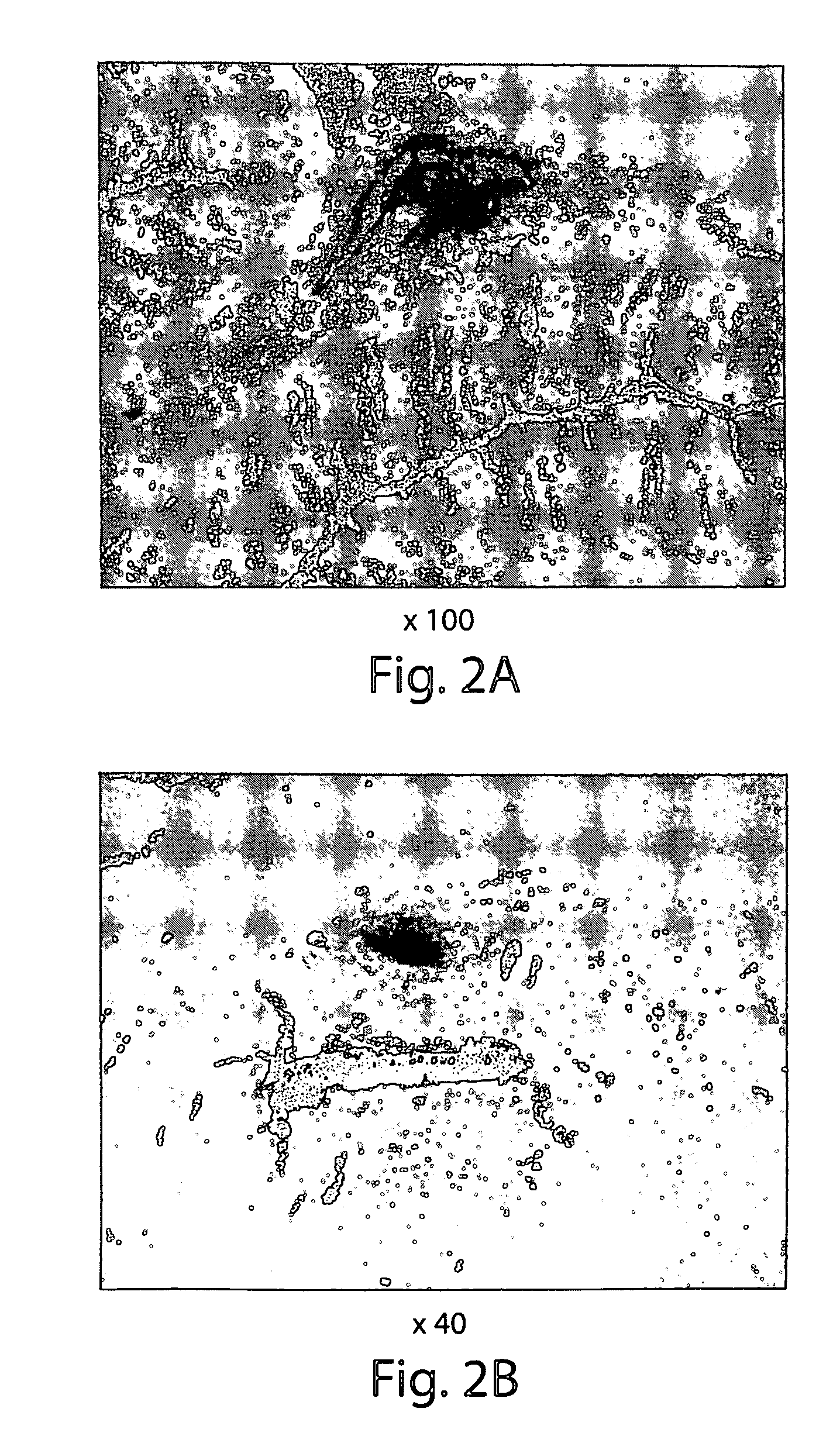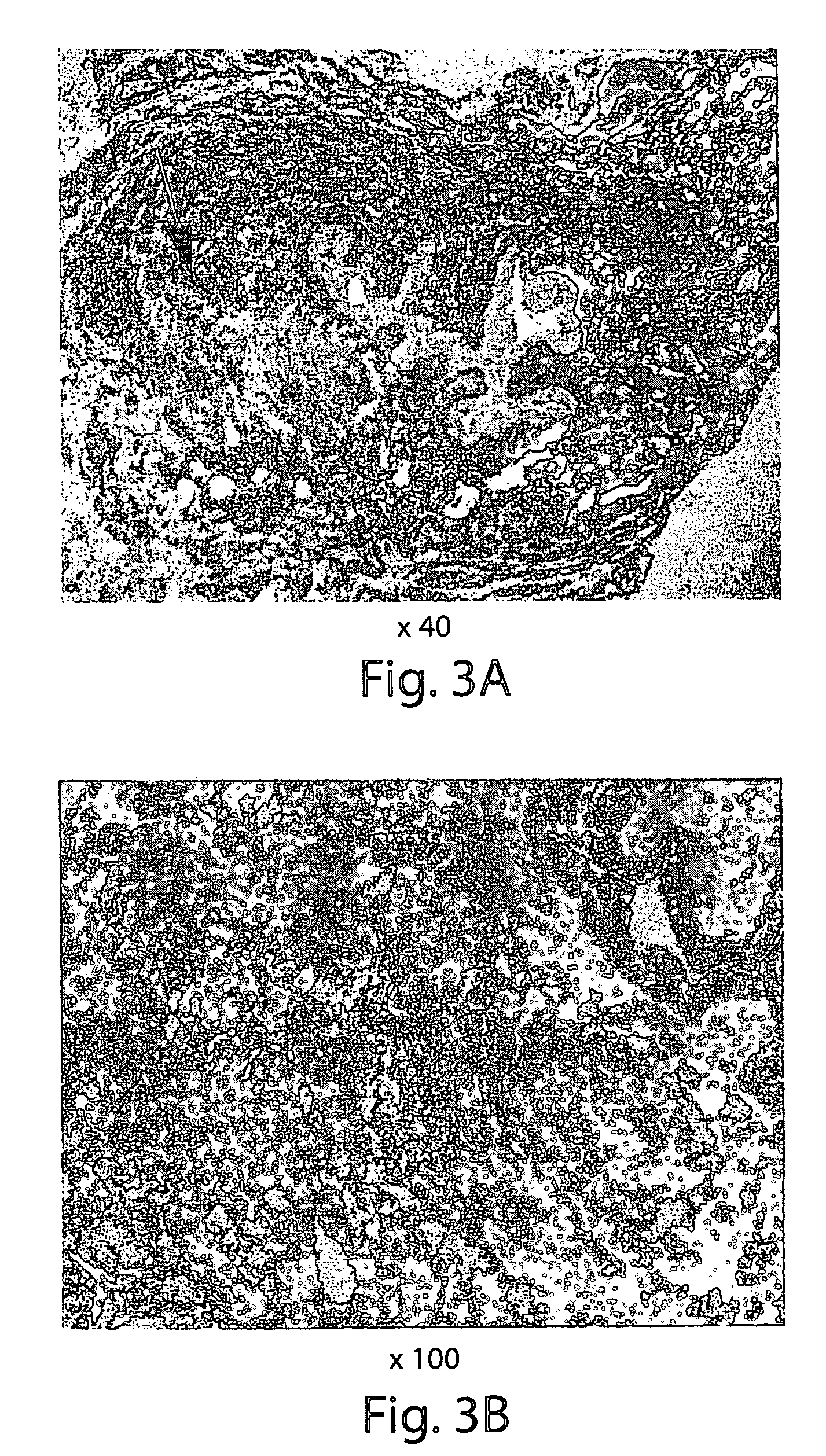Muscle derived cells for the treatment of cardiac pathologies and methods of making and using the same
a technology of muscle derived cells and cardiac pathologies, applied in the field of muscle derived progenitor cells, to achieve the effects of reducing the risk of cardiac disease, and increasing the function of the patient's hear
- Summary
- Abstract
- Description
- Claims
- Application Information
AI Technical Summary
Benefits of technology
Problems solved by technology
Method used
Image
Examples
example 1
MDC Enrichment, Isolation and Analysis
[0094]Enrichment and isolation of MDC: MDCs were prepared as described (U.S. Pat. No. 6,866,842 of Chancellor et al.). Muscle explants were obtained from the hind limbs of a number of sources, namely from 3-week-old mdx (dystrophic) mice (C57BL / 10ScSn mdx / mdx, Jackson Laboratories), 4 6 week-old normal female SD (Sprague Dawley) rats, or SCID (severe combined immunodeficiency) mice. The muscle tissue from each of the animal sources was dissected to remove any bones and minced into a slurry. The slurry was then digested by 1 hour serial incubations with 0.2% type XI collagenase, dispase (grade II, 240 unit), and 0.1% trypsin at 37° C. The resulting cell suspension was passed through 18, 20, and 22 gauge needles and centrifuged at 3000 rpm for 5 minutes. Subsequently, cells were suspended in growth medium (DMEM supplemented with 10% fetal bovine serum, 10% horse serum, 0.5% chick embryo extract, and 2% penicillin / streptomycin). Cells were then pre...
example 2
MDC Vectors and Transfection
[0100]Retrovirus and adenovirus vectors: The MFG-NB (N. Ferry et al., 1991, Proc. Natl. Acad. Sci. USA 88:8377 81) retroviral vector was used for the MDCs experiments. This vector contains a modified LacZ gene (NLS-LacZ) that includes a nuclear-localization sequence cloned from the simian virus (SV40) large T antigen transcribed from the long terminal repeat (LTR). The retroviral stock was grown and prepared as previously described (J. C. van Deutekom et al., 1998, Neuromuscul. Disord. 8:135 48). The retrovirus was titered to 1×107−1×109 cfu / ml.
[0101]An adenovirus vector was also used. This vector contained the LacZ gene under the control of the human cytomegalovirus (HuCMV) promoter (J. Huard et al., 1994, Hum Gene Ther 5:949 58). The E1 E3 deleted recombinant adenovirus was obtained through Dr. I. Kovesdi (Gene Vec Inc., Rockville, Md.).
[0102]Viraltransduction of MDC: For viral transduction, MDCs were plated at a density of 1−1.5×106 in T 75 flasks. PP6...
example 3
Soft Tissue Augmentation of the Skin
[0103]MDCs and collagen injection: SD rats were prepared for surgery by anesthetizing with halothane using standard methods, and washing the surgical site with Betadine® solution. The skin of the lower abdomen was injected with either 10 microliters (μl) of a MDC suspension in HBSS (approximately 1−1.5×106 cells), 10 μl of commercially available bovine collagen (Contigen™; C. R. Bard, Covington, Ga.), or 10 μl of sterile saline using a Hamilton microsyringe. At 5 days, 2 weeks and 4 weeks post-injection, the area surrounding each injection site was excised, prepared for histochemical analysis, examined microscopically, and photographed. Histochemical analysis included hematoxylin, eosin, or trichrome staining.
[0104]The results demonstrate that MDCs were viable for up to at least 4 weeks following injection into skin tissue, with no evidence of inflammation of the tissue at the injection site (FIGS. 1D-1F). In contrast, collagen was not visible at ...
PUM
| Property | Measurement | Unit |
|---|---|---|
| temperature | aaaaa | aaaaa |
| temperature | aaaaa | aaaaa |
| temperature | aaaaa | aaaaa |
Abstract
Description
Claims
Application Information
 Login to View More
Login to View More - R&D
- Intellectual Property
- Life Sciences
- Materials
- Tech Scout
- Unparalleled Data Quality
- Higher Quality Content
- 60% Fewer Hallucinations
Browse by: Latest US Patents, China's latest patents, Technical Efficacy Thesaurus, Application Domain, Technology Topic, Popular Technical Reports.
© 2025 PatSnap. All rights reserved.Legal|Privacy policy|Modern Slavery Act Transparency Statement|Sitemap|About US| Contact US: help@patsnap.com



